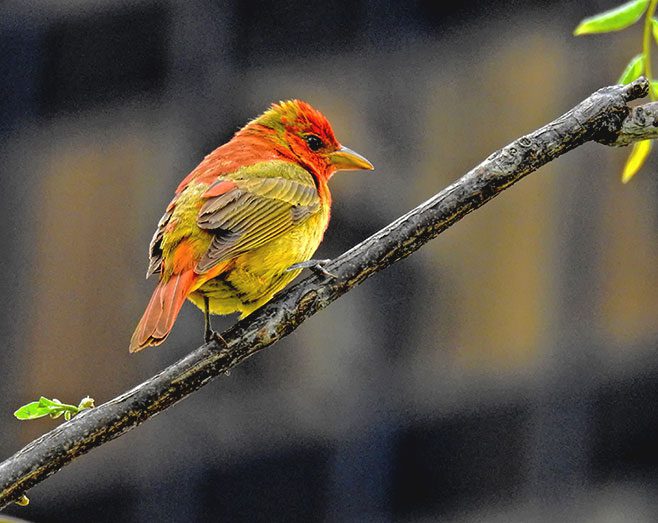New York City Passes Landmark Lights-Out Laws
By Marc Devokaitis
April 4, 2022
From the Spring 2022 issue of Living Bird magazine. Subscribe now.
In December, the New York City Council passed two new laws that will reduce nighttime illumination in the glimmering Big Apple skyline, helping migrating birds navigate around and through the city that never sleeps.
One new law focuses specifically on decreasing light pollution during peak migration times. It directs city-owned and city-occupied buildings to turn off nonessential outdoor lighting between the hours of 11:00 p.m. and 6:00 a.m. from August 15 to November 1, and from April 1 to May 31—peak fall and spring migration periods in the Northeast. The second ordinance requires city-owned properties to install occupancy sensors to ensure interior lights are only on when people are in a room, saving energy and curtailing a direct threat to birds by reducing the number of lit windows.
Analyses from BirdCast—a partnership between the Cornell Lab of Ornithology, Colorado State University, and University of Massachusetts Amherst that uses weather radar to monitor and predict bird migration—show differences in bird migration patterns when bright lights are on or off. Research published in Proceedings of the National Academy of Sciences in 2017 using BirdCast radar imagery showed that migrating birds clustered over Manhattan in densities 150 times greater than normal when drawn in by the spotlights blazing up from the ground at the National 9/11 Memorial & Museum Tribute in Light. The study also showed that shutting off the lights caused the birds to disperse almost immediately.
According to BirdCast Project Leader and Cornell Lab Senior Research Associate Andrew Farnsworth, the two new laws in NYC will reduce the risks to migratory birds from nighttime lighting in complementary ways. The law shutting down nonessential exterior lighting should reduce the city glow, drawing fewer birds toward danger. The law reducing interior lights when people aren’t in a room will mean fewer lit windows, helping birds already drawn into the city to make their way through the urban maze. And every window in every building matters: a 2021 study in Chicago by Cornell Lab postdoctoral researcher Benjamin Van Doren and others showed that darkening half the windows on a single building contributed to 11 times fewer bird collisions at the site during spring migration.
“New York City is the largest metropolitan area in the U.S., and among the top 10 most dangerous cities for birds in both spring and fall,” says Farnsworth, “so to have these kinds of laws on the books, along with the bird-safe glass law [that New York City passed in 2019], is an enormous positive step that benefits both birds and people. Hopefully other cities will follow suit.”
Farnsworth adds that the New York City Council worked closely with an array of conservation and research partners on these new ordinances to make sure they are grounded in the best-available science. And more bird-friendly laws could be on the way. NYC Audubon, BirdCast, and more than 20 other partners from the Lights Out Coalition have been working closely with the New York City Council to enact a third bill, already written but tabled in 2021, that would extend the lights-out policy to some non-city-owned buildings.
All About Birds
is a free resource
Available for everyone,
funded by donors like you
American Kestrel by Blair Dudeck / Macaulay Library




